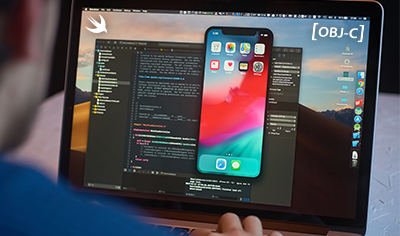With smartphone penetration at an all-time high (especially in mature markets) there is enormous opportunity to leverage mobile apps as a driver of business. Mobile applications open new pathways for connecting with users across B2C and enterprise segments. Consumers can access the data, products, and services they require at the touch of a button. In enterprise scenarios, mobile apps bring immense flexibility and speed, simplifying tedious tasks to drive employee productivity.
However, in spite of these benefits, companies are often reluctant to invest in mobile app development services. Unless they are digital natives, mobile apps could initially look like cost centers with doubts around adoption and ROI. Returns may not be immediate – Gartner even estimates that 99.9% apps are unlikely to be profitable. To address this challenge and ensure your app is among the remaining 0.1%, reimagine your investments in mobile apps in-sync with long-term goals, at optimized costs.
In this report, Damco analyzes the various levers of mobile application development, offering best practices on how to create an intelligent, ROI-focused estimation engine. To begin with, demarcate which devices and mobile application development platforms are within the ambit of the project, removing unnecessary costs and efforts. Answering this key question at the foundational stage can help mitigate unexpected additions and alterations. These include supported form factors, the hosting OS, processing power required, and other systems/apps integrations. Then focus on drilling down the key cost drivers of custom app development. Finally, weave the information into a detailed costings outline. Let’s discuss these ideas in more detail.
Key Cost Drivers Influencing Decision-Making

-
1. Understanding if multi platform app development is required
This is the single-most critical determining factor for any mobile application development project. Generally, enterprise apps are meant for internal use, working with a select set of devices according to corporate guidelines. This will automatically limit testing and development to a ready list of devices for design, build, and test procedures. B2C apps, on the other hand, will look at wider compatibility options, utilizing reusable components to reduce development efforts to a certain extent.It is important to remember that a single native app for two operating systems implies two distinct implementations. And, given that Android code cannot be entirely replicated in another ecosystem, the device/OS list will directly impact cost estimates.
Companies/individual developers can also choose between native, hybrid, or web-based mobile apps, a decision that has a huge impact on the mobile app development cost. Hybrid mobile app development or web apps are the simplest solutions but could compromise security and user experience. As a result, native mobile app development is the preferred alternative, allowing developers to leverage the device’s unique capabilities, albeit at higher costs. There are, however, a number of ways to cost-optimize native mobile app development. The overall flow, business rules, integration services, and certain test cases are reusable across platforms.
-
2. Assessing mobile user authentication needs
While this is often considered a must-have, in reality, not all apps require user login and this holds true even for enterprises. For scenarios that don’t call for authorization, development costs will be lower. For more sensitive applications, (like B2C banking apps which store personal financial data), companies can use two-factor authentication (2FA) strengthening security, often harnessing device-specific features like Apple’s TouchID.
-
3. Integrating with internal and external systems
Almost every app in use connects with a host of other systems or applications to be truly useful. For instance, an invoicing app will fetch information from supply chain management and logistics systems. An ecommerce app will have a Paypal integration and a mobile game will need ad plugins. This will extend cost and efforts beyond core development, encompassing web services, access to data repositories, and relevant third-party tools/APIs.
-
4. Factoring in distribution and security
An integral part of any app development roadmap is distribution planning. While consumer apps are delivered via public stores like iTunes or Google’s Play Store, a dedicated Enterprise App Store is essential for business users. This allows secure sharing across employees, partners, and trusted third parties, while also protecting the solution from competitors. Enterprise App Stores are available as individual products or bundled into Mobile Device Management (MDM) or Mobile Application Management (MAM) platforms. For B2C apps, mobile app developers will find Play Store a more cost-optimized alternative to iTunes.
-
5. Planning ahead for ongoing support, maintenance, and enhancements
Remember, implementation is only the beginning – efforts and spends can consistently increase post-deployment, depending on incoming feedback, bugs in the beta stage, and future upgradation possibilities. This applies specifically to agile environments, characterized by frequent releases and quick updates. It is advisable that enterprises assign a long-term product owner to manage costs and changes across the application lifecycle. B2C companies must set apart a portion of investments (around 20% is a good rule of thumb) only for upkeep.
-
6. Making room for unique device and application features
UI controls such as picker wheels, segmented buttons, and native keyboards are common elements, with only a minimal dent on development costs. However, differentiating features (like location services, signature capture, barcode scanning, and built-in payments) are often investment-heavy. As such, these can be sourced from publicly available standard modules, risking a one-size-fits-all approach, or designed from scratch for long-term efficacy. Obviously, the level of application complexity is directly linked to development costs.
To gauge this accurately, Damco suggests categorizing a mobile app into:
Apps that access: simple corporate data access
Apps that improve: re-envision an existing business process
Apps that transform: enable new products or servics
Translating Cost Drivers into Accurate Estimates
Once these key strands are in place, companies are now ready to right-size size their mobile application, in line with budgetary requirements. Damco, being a leading mobile application development company recommends a bottom-up approach, arriving at individual estimates for each feature, consolidated into a holistic, quality-focused ‘big picture.’
Typically, the cost calculation process can be broken down into:
-
1. High-level
This is the basic cost-to-build (for a single OS and device type) based on key functionalities and use cases, application architecture, development team structures, and tools required. Using a simple high/medium/low ranking methodology, tasks are prioritized to assess costs and timelines. Often, a Minimum Viable Product (MVP) may be actioned if there are timeline or budgetary constraints.
-
2. Detailed
After a navigational diagram is created, the next step is to evaluate functional attributes such as the number of screens, business logic, workflows, custom modules and reusability, UI wiring, and APIs. All of these elements, combined with the identified use cases, will help assess various requirements, creating an accurate effort estimation.
-
3. Generic
If developing for multiple form factors and operating systems, a multiplier effect is expected. This is applicable to core development costs, as well as testing, project management, and maintenance efforts.
-
4. Retrospective
Insights garnered from previous app development projects can inform the development plan. Historic estimates are compared to actual efforts required, assimilating any gaps and their reasons into the new estimation formula.
Conclusion
As smartphone usage in begins impact every sphere of our lives, from work to leisure and lifestyle, it is essential to prepare for new forms interactions. Clearly, applications development in any environment is a cost and effort-intensive prospect, involving multiple stakeholders (marketing, sales, design, copywriters, etc.). It is important to factor this in, before commencing on the project, matching ROI to expectations.
Remember, mobile app development will always include a number of fixed spends. By maintaining a detailed checklist of technical requirements in-sync with desired outcomes, companies can build useful, engaging mobile apps that actually find resonance with the target audience.





